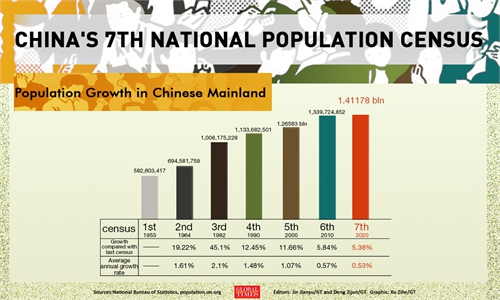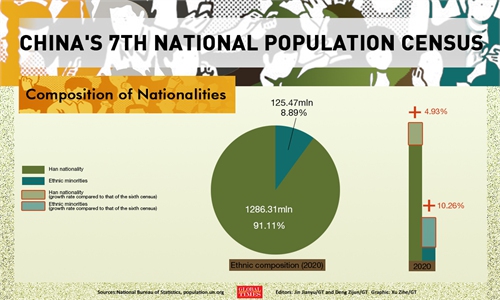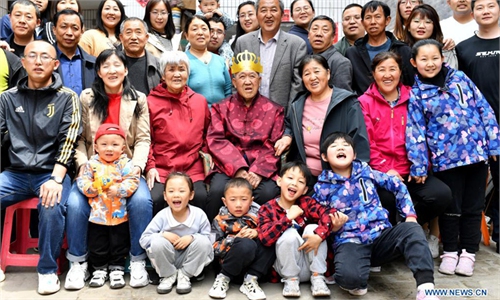Delay in result release of latest census was due to more abundant info; population undercount rate lower than intl standard: NBS

Photo:Global Times
The figures released at China’s seventh national population census are more abundant compared with that from the sixth census, requiring a longer preparation time, and China’s population undercount rate is lower than international standards, the National Bureau of Statistics (NBS) said Tuesday, as the outcome of the latest census was one month later than its previously-scheduled release period.
Zeng Yuping, Chief Methodologist of the NBS, made the remarks at a press conference on Tuesday after the outcome of the seventh census was released.
Zeng said that for countries like the US, it also took about one year from registration of census date to release the data.
He said that the population undercount rate in the seventh population census was 0.05 percent, lower than international standards, and the seventh census’ results were true and reliable. The population undercount rate in the sixth census was 0.12 percent.
Zhang Yi, Director-General of the Department of Population and Employment Statistics of the NBS said at the press conference that the seventh population census was conducted based on unified standards and within the unified time range, and the census team registered each item of each person, collected the data electronically and reported it online in real time.
After the completion of the data review, the relevant population data were directly summarized and calculated without any post-adjustment, Zhang said.
Data from the last few censuses are usually released at the end of April of the following year, but the release from the seventh census was postponed to May, sparking some speculation.
Lu Jiehua, professor of sociology at Peking University, pointed out that the current census has sparked massive global attention from an early stage, which made both the NBS and the census team more cautious with the data release, applying more review and evaluation, which may have led to the delayed release of the data.
"More than the timing of the release of the census data, what is of concern is the authenticity of the data and what it reflects about the current state of the population," Lu told the Global Times on Tuesday.
According to the NBS, over the past decade, China's population has continued to grow and China is still the most populous country in the world, with steady improvement in population quality, according to the NBS.
China’s population will remain above 1.4 billion for a certain period in the future. The country still has a large workforce, and the average age of the population stood at 38.8 in 2020, the NBS said. The average age of the US population is 38.
China still enjoys “demographic dividend” and with the continuous improvement of population quality, new advantages will appear, NBS said.
The ethnic minority population in the Chinese mainland reached 125 million in 2020, accounting for 8.89 percent of the total population, up 0.4 percentage points compared with 2010, according to the latest population census.
The steady growth of the country’s ethnic population fully reflects the comprehensive development and progress of all ethnic groups in China under the leadership of the Communist Party of China, the NBS said.




